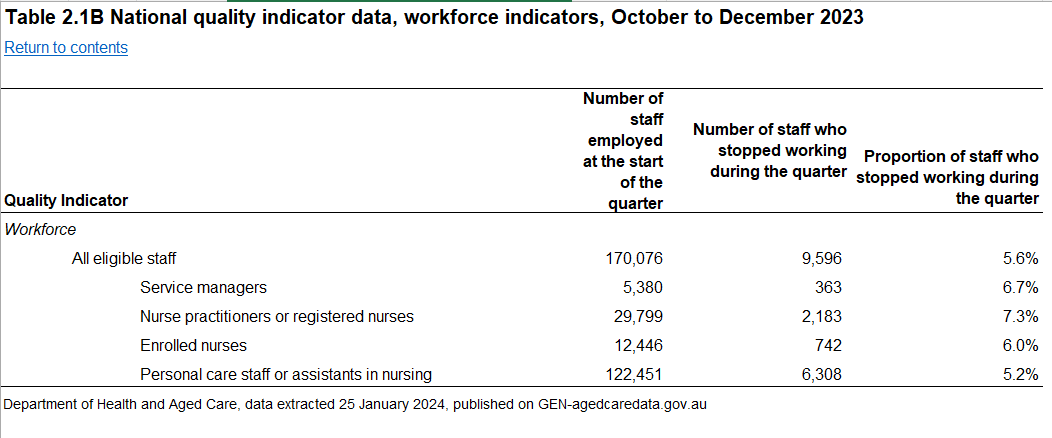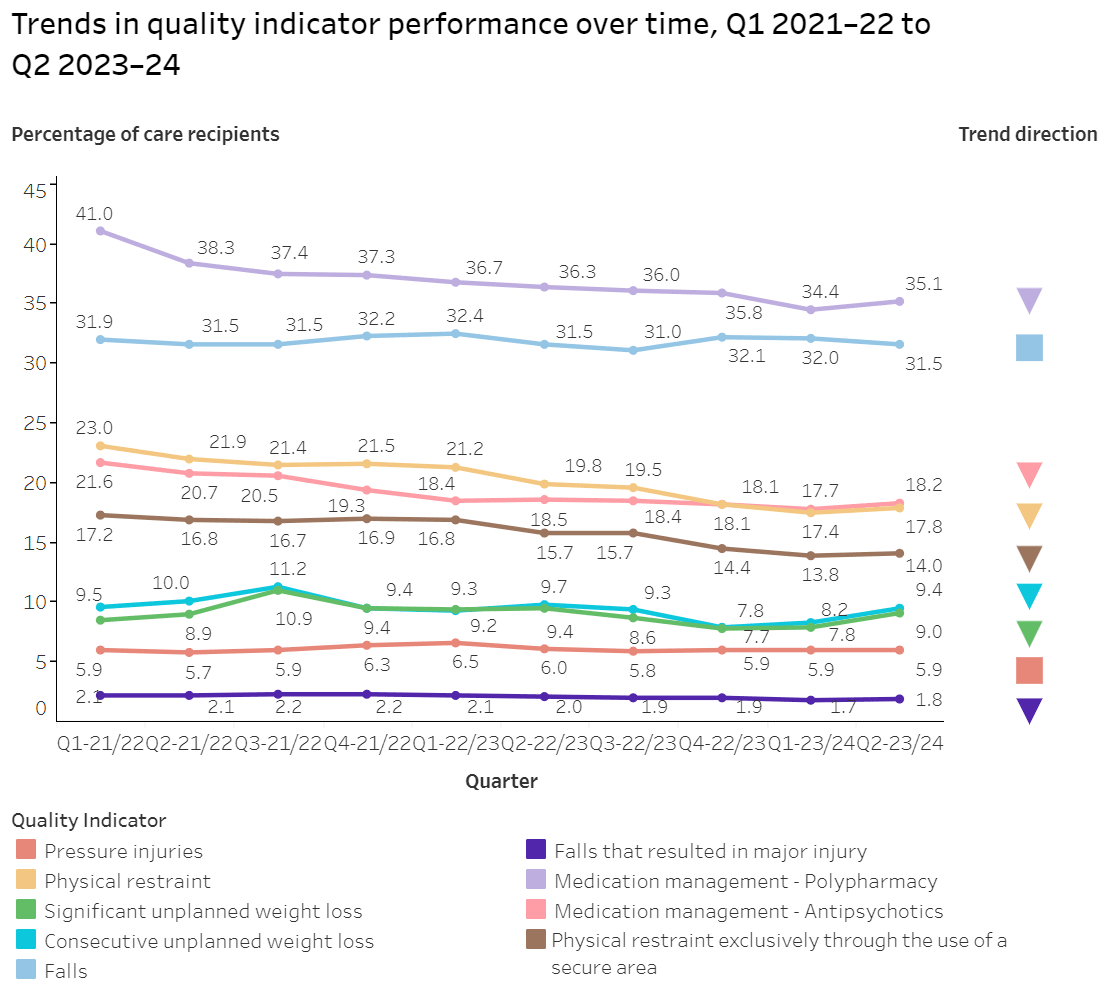Aged care sector over 5,000 RNs short for tougher mandatory care minutes in October
You can download the QI Program data for the December 2023 quarter here

The aged care workforce, as indicated by the number of Service Managers, Registered Nurses (RNs), Nurse Practitioners (NPs), Enrolled Nurses (ENs), and Personal Care Workers measured by the Quality Indicator Program (QI Program), increased by 896 workers in the three months to 31 December 2023 to 170,076, an increase of less than 1%. The number of RNs and NPs employed in the sector was 29,799, an increase of 700 or 2.4% over the previous quarter (workforce data has only been published for the last two quarters so longer-term trends can not be identified.) It was only in February that Shadow Minister for Health and Aged Care, Senator Anne Ruston, was told in Senate Estimates only 44 RNs joined the aged care sector in the December quarter. The 2.4% increase in RNs and NPs means that the sector is an estimated over 5,000 RNs short for the incoming new care minutes. From 1 October 2024, the current 200 mandated direct care minutes will increase to a sector-wide average of 215 care minutes per resident per day, including 44 minutes of direct care by an RN. The residential aged care sector was achieving care minutes of 193.99 per resident per day as of 1 October 2023, the day that 200 direct care minutes became mandatory, the Minister for Aged Care and Sport Anika Wells said in a statement. RNs delivered 36.78 minutes of care per resident per day, compared with the required 40 minutes. The aged care sector requires an additional 5,918 RNs by 2024-25, according to data provided by the Department of Health and Aged Care in February 2024 - about 1,000 per quarter. The latest QI data shows that 2,183 RNs and NPs - or 7.3% of all RNs and NPs working in the sector - left their jobs in the December quarter. Not all those workers left the sector. The figure is used as an "indicator of workforce turnover" but only represents RNs or NPs "who stopped working for the provider" - those who left may have moved to a different provider. RN/NP turnover is down from the previous quarter, when 7.9% of RNs and NPs left their jobs. Turnover was also down slightly for the total care workforce 5.6% of care staff left their employer in the December quarter, compared with 6.0% in the September quarter. The number of ENs decreased 4.5% from the September quarter to 12,446 employees - the only category of care worker to see a decline in numbers. Care minutes for ENs are not mandated under the new mandated care minute requirements.
73% of residents say Quality of Life is good or excellent
Other highlights from the December quarter QI Program data include:
- 72.6% of residents rated their 'Quality of Life' 'good' or 'excellent
- 78.1% of residents met the criteria for incontinence
- 35.1% of residents met the criteria for polypharmacy (five or more medications daily)

- over the course of the QI Program, there has been a "statistically significant" decrease in most QIs - including polypharmacy, antipsychotic medication use, falls that resulted in major injury, use of physical restraint, and significant unplanned weight loss
- there has been a slight increase in the prevalence of unplanned weight loss in recent quarters, but the overall trend from 10 quarters since the indicator has been measured continues to show a "slightly decreasing trend"
For the December quarter, data from 2,536 aged care homes was included in the QI Program. The QI Program commenced from 1 July 2019, was expanded on 1 July 2021, and then expanded again from 1 April 2023 when six new QIs (activities of daily living, incontinence care, hospitalisations, workforce, consumer experience, and quality of life) were introduced. Download the QI Program data for the December 2023 quarter here.





